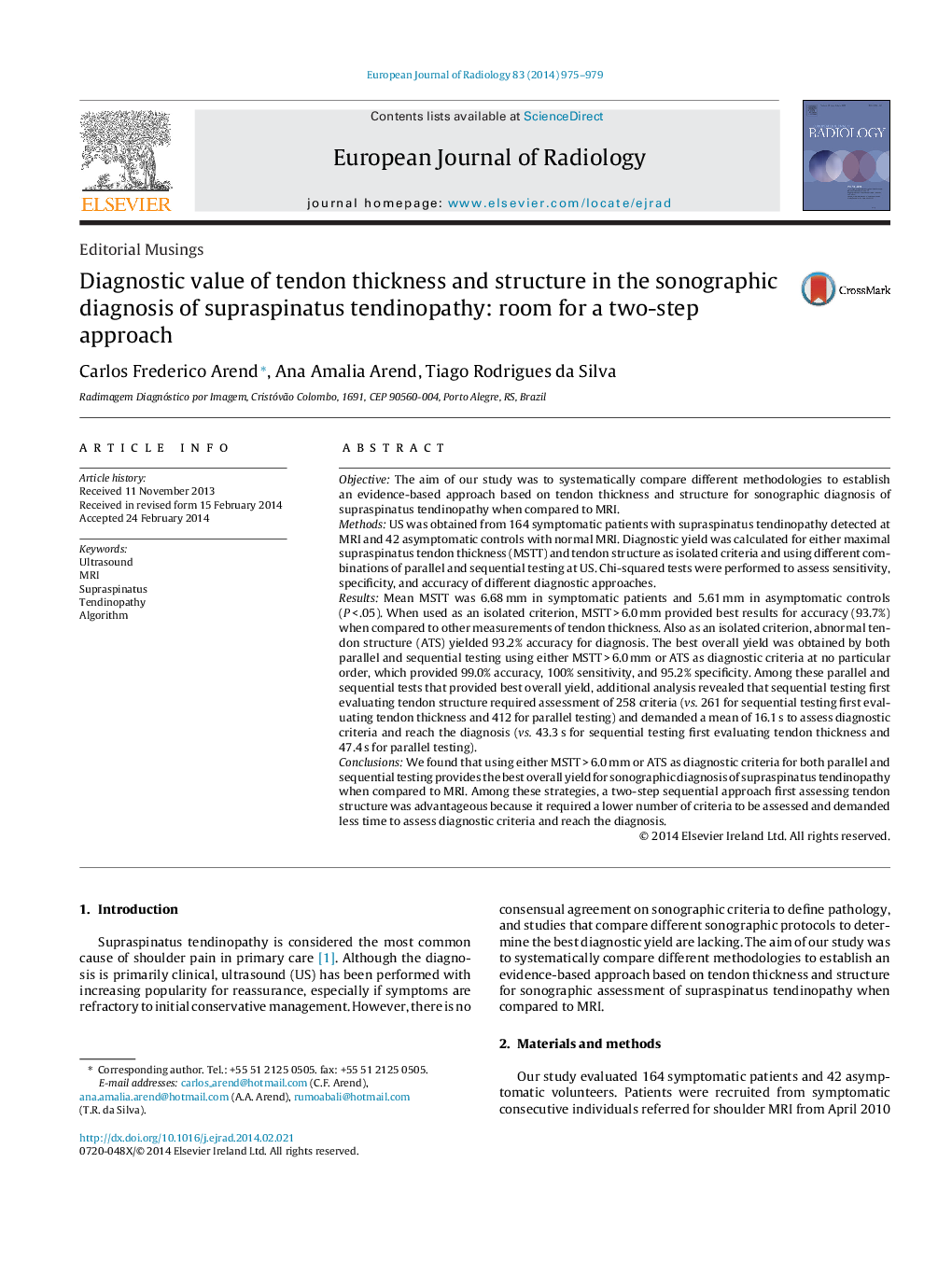| Article ID | Journal | Published Year | Pages | File Type |
|---|---|---|---|---|
| 4225242 | European Journal of Radiology | 2014 | 5 Pages |
ObjectiveThe aim of our study was to systematically compare different methodologies to establish an evidence-based approach based on tendon thickness and structure for sonographic diagnosis of supraspinatus tendinopathy when compared to MRI.MethodsUS was obtained from 164 symptomatic patients with supraspinatus tendinopathy detected at MRI and 42 asymptomatic controls with normal MRI. Diagnostic yield was calculated for either maximal supraspinatus tendon thickness (MSTT) and tendon structure as isolated criteria and using different combinations of parallel and sequential testing at US. Chi-squared tests were performed to assess sensitivity, specificity, and accuracy of different diagnostic approaches.ResultsMean MSTT was 6.68 mm in symptomatic patients and 5.61 mm in asymptomatic controls (P < .05). When used as an isolated criterion, MSTT > 6.0 mm provided best results for accuracy (93.7%) when compared to other measurements of tendon thickness. Also as an isolated criterion, abnormal tendon structure (ATS) yielded 93.2% accuracy for diagnosis. The best overall yield was obtained by both parallel and sequential testing using either MSTT > 6.0 mm or ATS as diagnostic criteria at no particular order, which provided 99.0% accuracy, 100% sensitivity, and 95.2% specificity. Among these parallel and sequential tests that provided best overall yield, additional analysis revealed that sequential testing first evaluating tendon structure required assessment of 258 criteria (vs. 261 for sequential testing first evaluating tendon thickness and 412 for parallel testing) and demanded a mean of 16.1 s to assess diagnostic criteria and reach the diagnosis (vs. 43.3 s for sequential testing first evaluating tendon thickness and 47.4 s for parallel testing).ConclusionsWe found that using either MSTT > 6.0 mm or ATS as diagnostic criteria for both parallel and sequential testing provides the best overall yield for sonographic diagnosis of supraspinatus tendinopathy when compared to MRI. Among these strategies, a two-step sequential approach first assessing tendon structure was advantageous because it required a lower number of criteria to be assessed and demanded less time to assess diagnostic criteria and reach the diagnosis.
